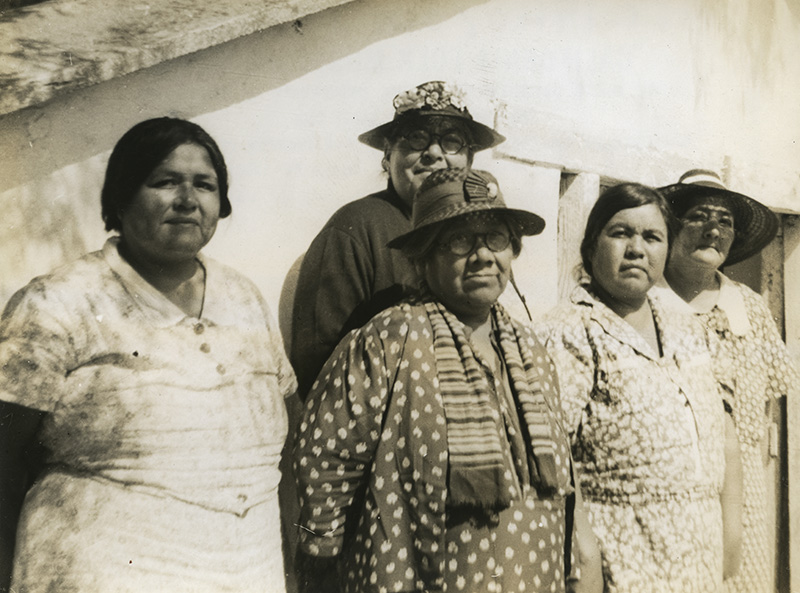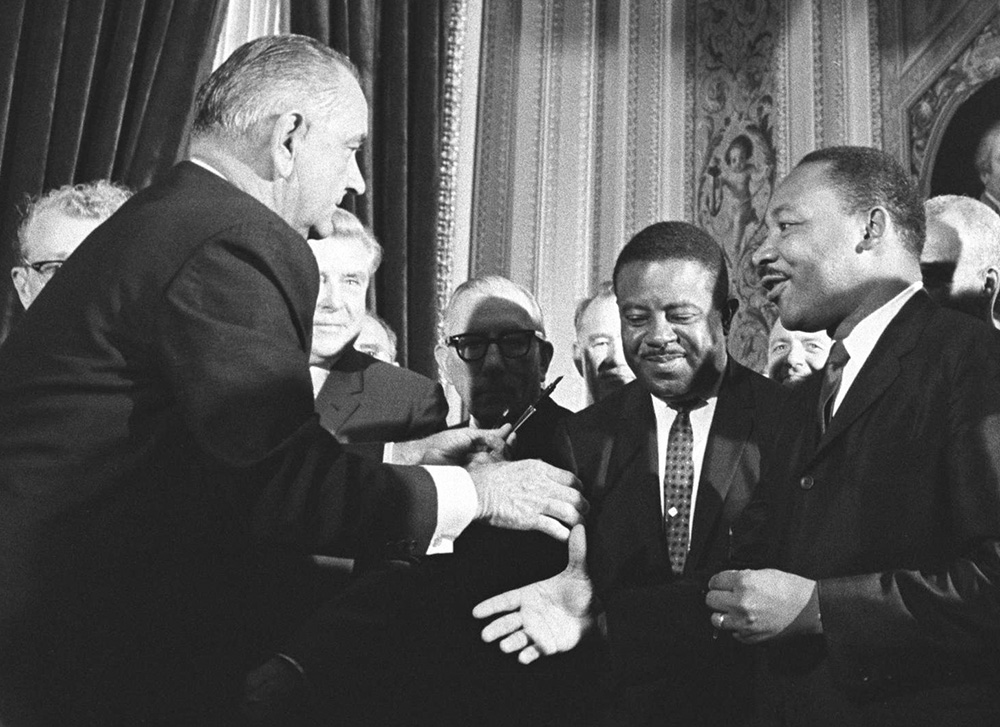
Women pose for a photo at Pala Mission in 1939. Native American women did not become U.S. citizens until 1924. (Courtesy of Library of Congress)
Women pose for a photo at Pala Mission in 1939. Native American women did not become U.S. citizens until 1924. (Courtesy of Library of Congress) Through much of U.S. history, people born to tribes and indigenous nations inside the borders of the United States were considered foreign nationals. Even after the passage of the 14th Amendment, most Native Americans were denied citizenship and voting rights. According to U.S. law, all foreigners needed to go through a naturalization process in order to become American citizens. For most of American history this meant that Native Americans who wished to vote needed to abandon their traditional cultures and assimilate into white society.
Culturally diverse and geographically isolated, by 1900 little consensus existed among the Native American population as to whether U.S. citizenship had value. There was a deep distrust of the federal government and the states. The United States had consistently broken treaties with Native Americans, dislocated indigenous people from their land, and sanctioned the eradication of tribes and customs for generations.
Some native groups pushed for assimilation to prove their equality in the face of this discrimination, while others argued for separation to better preserve their culture. Many native women were particularly disinterested at the prospect of gaining citizenship. Depending on their tribe or nation, some of these women already had the power to vote, hold property, divorce their partner, and retain legal rights over children. Gaining U.S. citizenship could endanger their traditional powers, and force Native American women into legal dependency on men.

President Lyndon B. Johnson [left] and civil rights leader Martin Luther King [right] at the signing of the Voting Rights Act in 1965. (By Yoichi Okamoto; Courtesy of Lyndon Baines Johnson Library and Museum)
President Lyndon B. Johnson [left] and civil rights leader Martin Luther King [right] at the signing of the Voting Rights Act in 1965. (By Yoichi Okamoto; Courtesy of Lyndon Baines Johnson Library and Museum) The situation changed after World War I, when native men who received honorable discharges from the Army also gained U.S. citizenship. Ratification of the 19th Amendment in 1920 eased the concerns of native women that they would retain rights to property and suffrage. Finally, in 1924, the Indian Citizenship Act granted citizenship to "all non-citizen Indians born within the territorial limits of the United States.” Prior to its passage, though, nearly two-thirds of Native Americans in the U.S. were already citizens by marriage, military service, or forced assimilation.
Issues of Indigenous Access
Though all Native Americans in the U.S. are citizens now, with some even holding dual citizenship, there is still an ongoing struggle to secure voting rights for indigenous people. Disenfranchisement began in 1924, with states implementing poll taxes, literacy tests, and voter intimidation. The 1965 Voting Rights Act dealt with some of these issues, particularly for older Native Americans who were more fluent in their traditional languages than English.
As the courts have slowly dismantled the Voting Rights Act, many indigenous people in 2020 have less voter access than they did just a few decades ago. Native communities often suffer from stringent voter ID laws which restrict access to the ballot box. There also remains a scarcity of polling stations in – or even close to – the western reservations which nearly a million Native Americans call home.
Next:
Indigenous Voting Rights in Oregon >